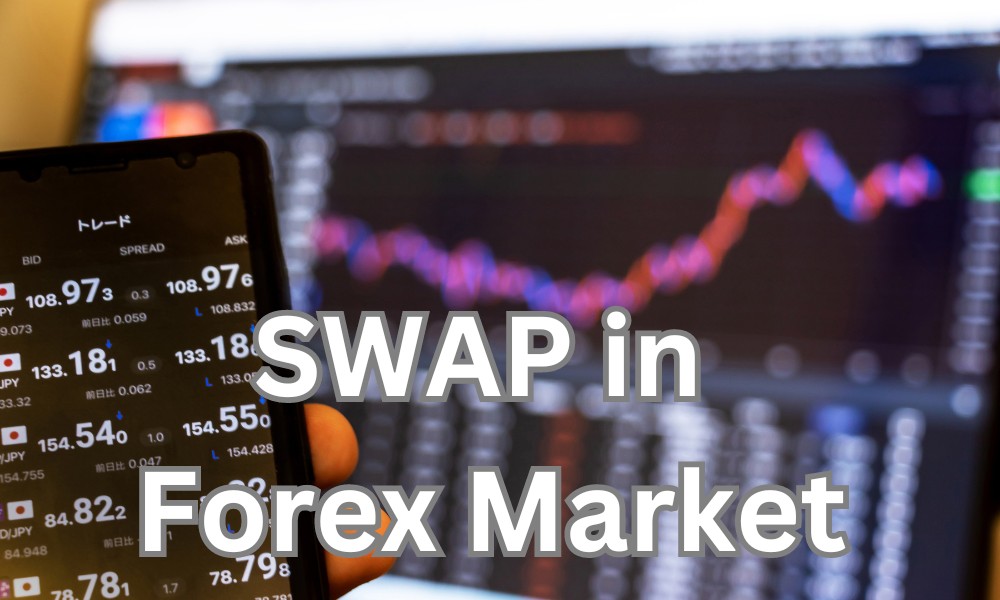
Everything You Should Know About SWAP in Forex Market
In the wide world of Forex trading, understanding specific terms is crucial. One such term is SWAP! Knowing how it works is essential if you are hoping to jump on to the forex trading bandwidth.
In this guide, we’ll explain SWAP in simple language, covering what it is, how it impacts trading etc. We break down the factors that influence SWAP rates, and the good and bad sides of using it in trading. Read ahead to learn some practical tips to help you use SWAP effectively without getting into complex details.
How Does SWAP Work?
At its core, a SWAP is a financial transaction where two parties agree to exchange financial instruments or cash flows for a specific period. In Forex trading, SWAPs often refer to the interest rate differential between the two traded currencies.
Central banks and financial institutions play a significant role in SWAP markets, ensuring the smooth flow of these transactions. For gaining more insight into Swap trading, use the services provided by reputable brokers like loyal primus.
SWAP Rates and Forex Trading
SWAP rates have a direct impact on currency pairs in the Forex market. They are essentially the difference in interest rates between the currencies being traded. Traders keenly observe these rates to make informed decisions. Positive SWAP rates can benefit traders as they earn additional income, while negative rates could lead to additional costs.
What is a Negative Currency Swap?
A negative currency swap occurs when you hold a position for a currency with a higher interest rate than the one you bought. In simpler terms, you face a negative swap if you’re paying more interest on the currency you sold than what you’re earning on the currency you bought.
How Are Swaps Calculated?
When you engage in Forex trading, such as buying EUR/USD, you’re essentially buying euros and selling US dollars. But selling a currency means borrowing it, and if you keep that position open overnight, you pay interest on this borrowed amount.
For instance, if the interest rate for the euro is 0.5% and the US dollar is 2%, the difference (-1.5%) leads to a negative swap. During the rollover, you pay this negative amount.
Simply put, your trade earns you the interest rate of the currency you bought, and you owe the interest rate of the currency you sold. This difference in rates is what’s known as a swap.
Understanding these basic principles can significantly impact your Forex trading decisions. Being aware of negative swaps and how they’re calculated empowers you to make informed choices, ensuring you navigate the Forex market wisely. To learn more about Swaps, you can use omega pro‘s educational resources.
Benefits of SWAP Trading
-
Additional Income: SWAP rates allow traders to earn extra income by holding positions overnight, especially in carry trade strategies, where they capitalize on interest rate differentials.
-
Diversification of Strategies: Incorporating SWAPs in trading strategies diversifies options, enabling traders to explore various approaches for maximizing profits.
-
Flexibility: SWAPs provide flexibility in trading, allowing traders to hold positions for longer durations without worrying about daily market fluctuations.
-
Hedging Opportunities: Traders can use SWAPs to hedge their positions, minimizing potential losses due to adverse market movements.
Risks of SWAP Trading
-
Interest Rate Fluctuations: SWAP rates are directly impacted by interest rate differentials. Fluctuations in interest rates can lead to varying SWAP rates, affecting trading costs and potential profits.
-
Market Volatility: Sudden market volatility can result in rapid changes in SWAP rates, leading to unexpected costs or reduced profits for traders.
-
Liquidity Risks: In illiquid market conditions, traders may face challenges in executing SWAP transactions at desired rates, potentially impacting their overall trading strategies.
-
Overleveraging: Overreliance on SWAP rates for generating income can lead to overleveraging, increasing the risk of significant losses if the market moves unfavourably.
To minimize the risks associated with swap trading, you can use risk management tools provided by ftmo.
Factors Influencing SWAP Rates
Several factors influence SWAP rates, and understanding them is vital for traders. Central bank policies, market sentiment, and various economic indicators are crucial. Central banks, in particular, have a significant influence as their interest rate decisions directly affect SWAP rates.
Tips for Forex Traders
Here are some friendly pointers for fellow traders venturing into the realm of SWAPs. Understanding the balance between interest rates and currency pairs is complicated but rewarding.
Stay in the loop with central bank policies and economic indicators – they’re like your trusty compass in this vast Forex terrain. You must be careful while leveraging your trades. It’s like handling a delicate balance; too much can lead to a tumble. Keep track of your market positions, be safe and alert!
Conclusion
In wrapping it all up, think of SWAPs not just as financial jargon, but as your secret weapon in the Forex market. It’s a very crucial trading tool that can change the trading game.
By understanding the nuances of SWAP rates, their connection with trading, the factors that sway them, and by practicing smart risk management, you’re not just navigating the Forex world; you’re conquering it.
With this knowledge, go out there and trade with confidence – the world of Forex is yours to explore!
Remember, successful trading is not just about buying and selling; it’s about understanding the underlying mechanisms and making informed decisions.
With a solid understanding of SWAP and its nuances, traders can enhance their trading strategies and embark on a more secure and profitable trading journey. Happy trading!


